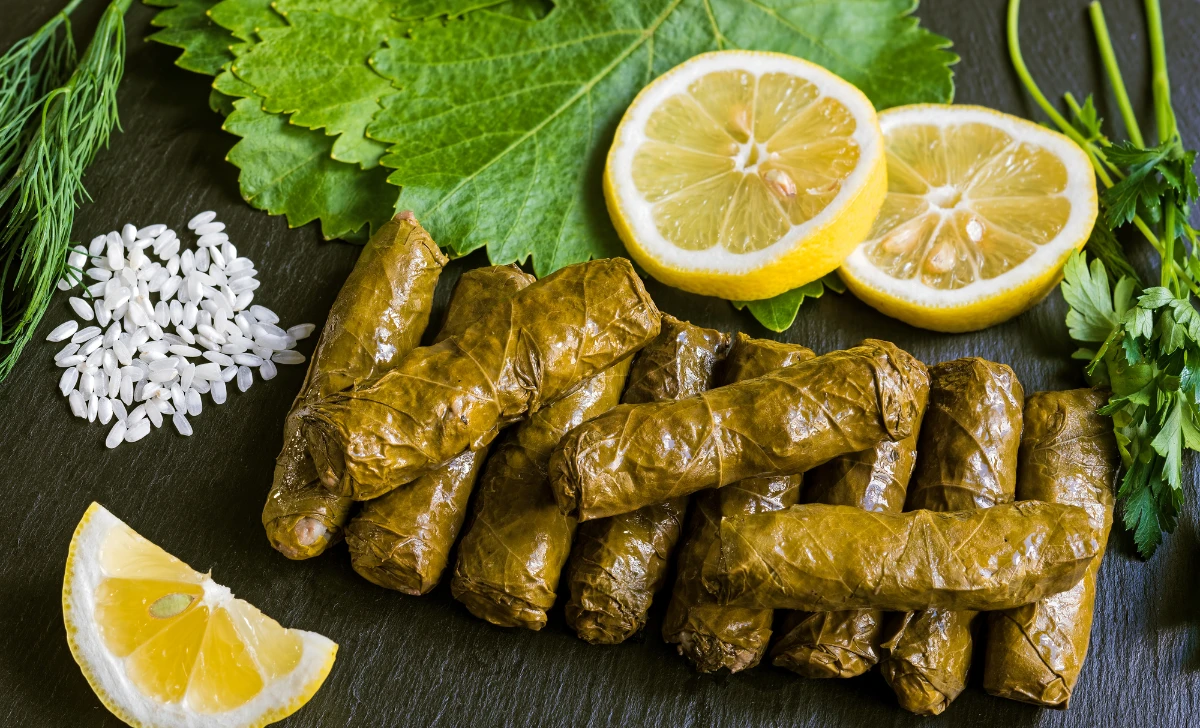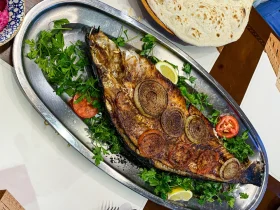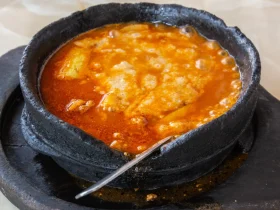When it comes to Mediterranean cuisine, stuffed grape leaves stand out as one of the most delectable and traditional dishes. Also known as Dolmades, this delightful recipe combines the flavors of tender grape leaves with a flavorful mixture of rice, herbs, and spices. Whether you’re looking to impress your guests at a dinner party or simply indulge in a mouthwatering treat, this article will guide you through the process of making stuffed grape leaves that will leave everyone craving for more.
[ez-toc]
History
Stuffed grape leaves, also known as Dolmades, have a rich and storied history that stretches back centuries. This culinary delight can be traced back to ancient times, where it was first crafted in the region known as Mesopotamia, which includes modern-day Iraq and surrounding areas. The ancient people of this region discovered that grape leaves were not only abundant but also had a unique flavor that could enhance various dishes.
Mesopotamian Origins
In Mesopotamia, around 1700 BCE, the inhabitants began experimenting with grape leaves by stuffing them with a combination of rice, meat, and aromatic herbs. These early versions of stuffed grape leaves served not only as a delicious treat but also as a practical way to preserve food for longer periods. The dish quickly gained popularity and spread throughout the Mediterranean region, reaching different cultures and civilizations.
Greek Influence
As the recipe for stuffed grape leaves continued to evolve, the Greeks embraced this delightful dish and made it a significant part of their culinary repertoire. It is believed that ancient Greeks would serve Dolmades during festive occasions and celebrations, considering it a delicacy fit for the gods.
Roman Adoption
The Romans, known for their passion for diverse cuisine, also adopted the stuffed grape leaves recipe from the Greeks. They added their own twist by incorporating different fillings and experimenting with various seasonings. This adaptation further popularized Dolmades across the vast Roman Empire, introducing it to new regions and communities.
Arab Influence
With the expansion of the Islamic Empire in the 7th century, the recipe for stuffed grape leaves traveled to the Middle East, where it was embraced and enhanced by Arab chefs. The Arabs introduced additional ingredients such as nuts, dried fruits, and exotic spices, infusing the dish with new flavors and textures.
Ottoman Legacy
During the height of the Ottoman Empire, stuffed grape leaves became an integral part of the royal cuisine. The Ottomans refined the recipe further, elevating Dolmades to a fine art, and serving it at lavish banquets and gatherings. The empire’s influence spread far and wide, taking the dish to new corners of the world.
Modern Times
As time passed, stuffed grape leaves gradually found their way into the hearts and kitchens of people worldwide. Mediterranean immigrants brought the recipe to new continents, including Europe, North America, and Australia, introducing it to diverse cultures and communities.
Time
| Step | Time (approx.) |
|---|---|
| Preparing the Grape Leaves | 30 minutes |
| Creating the Filling | 20 minutes |
| Rolling the Dolmades | 40 minutes |
| Cooking the Stuffed Grape Leaves | 1 hour |
| Total Time | 2 hours 30 minutes |
Please note that the times mentioned above are approximate and may vary depending on individual cooking skills and kitchen equipment. Enjoy making this delicious Mediterranean delight!
Ingredients
| Ingredients | Quantity |
|---|---|
| Grape Leaves | 20 leaves |
| Arborio Rice | 1/2 cup |
| Water | 1 cup |
| Olive Oil | 2 tablespoons |
| Onion (finely chopped) | 1/2 medium-sized |
| Garlic (minced) | 2 cloves |
| Fresh Dill (chopped) | 2 tablespoons |
| Fresh Mint (chopped) | 2 tablespoons |
| Lemon Juice | 2 tablespoons |
| Salt | 1/2 teaspoon |
| Black Pepper | 1/4 teaspoon |
| Ground Cinnamon | 1/4 teaspoon |
| Greek Yogurt (optional) | For serving |
Adjust the quantity of the ingredients based on your taste preferences and enjoy a delightful meal for two with these Stuffed Grape Leaves!
Directions
Step 1: Preparing the Grape Leaves
- Gather the Ingredients
- Get the required number of grape leaves, ensuring they are clean and free from any tears or damages.
- Blanch the Grape Leaves
- In a large pot, bring water to a boil.
- Submerge the grape leaves in the boiling water for 2-3 minutes to blanch them. This process will soften the leaves and make them pliable for rolling.
- Shock and Drain
- Using a slotted spoon, carefully remove the grape leaves from the boiling water and immediately transfer them to a bowl of ice-cold water. This will stop the cooking process and preserve the vibrant green color.
- Drain the leaves and pat them dry with a paper towel. Set them aside.
Step 2: Creating the Filling
- Prepare the Rice
- Rinse the Arborio rice under cold water until the water runs clear.
- In a medium-sized saucepan, combine the rinsed rice and water. Bring it to a boil, then reduce the heat to low, cover the pan, and let it simmer for about 10 minutes or until the rice is partially cooked.
- Saute the Aromatics
- In a separate skillet, heat olive oil over medium heat.
- Add the finely chopped onion and minced garlic. Sauté until they turn soft and translucent.
- Mix the Filling
- In a mixing bowl, combine the partially cooked rice, sautéed onions, garlic, chopped dill, chopped mint, lemon juice, salt, black pepper, and ground cinnamon.
- Stir the ingredients thoroughly to ensure even distribution of flavors.
Step 3: Rolling the Dolmades
- Prepare the Work Surface
- Lay out a clean work surface and place the grape leaves with the shiny side down.
- Fill and Fold
- Take one grape leaf and place a spoonful of the rice filling near the stem end.
- Fold the stem end over the filling, then fold in the sides, and roll it tightly into a neat cylinder.
- Repeat this process for the remaining grape leaves and filling.
Step 4: Cooking the Stuffed Grape Leaves
- Layer the Dolmades
- In a large pot or deep skillet, place a layer of stuffed grape leaves at the bottom. This will prevent them from sticking to the pot.
- Add Water
- Pour enough water into the pot to cover the dolmades. You can also add a little extra lemon juice for added flavor.
- Simmer
- Cover the pot and simmer the stuffed grape leaves over low heat for about 1 hour or until the rice filling is fully cooked and tender.
Step 5: Serving
- Garnish
- Once the stuffed grape leaves are cooked, remove them from the pot and arrange them on a serving plate.
- Optional Greek Yogurt
- Serve with a side of Greek yogurt for a creamy and tangy complement to the dish.
- Enjoy!
- Dive into the delectable flavors of these Stuffed Grape Leaves, and savor the taste of Mediterranean cuisine in every bite.
Equipment Required
Nutrition Information
| Nutrition Information | Per Serving (2 persons) |
|---|---|
| Serving Size | 5-6 stuffed grape leaves |
| Calories | 250-300 kcal |
| Total Fat | 10-12g |
| Saturated Fat | 1.5-2g |
| Cholesterol | 0mg |
| Sodium | 400-450mg |
| Total Carbohydrates | 35-40g |
| Dietary Fiber | 4-5g |
| Sugars | 2-3g |
| Protein | 5-6g |
| Vitamin D | 0mcg |
| Calcium | 60mg |
| Iron | 2.5mg |
| Potassium | 250mg |
| Vitamin C | 10mg |
| Vitamin A | 1500IU |
Please note that these nutritional values are estimates and may vary based on the specific ingredients and brands used in the recipe. It’s always a good practice to calculate the nutrition information based on the exact products you use. Enjoy your delicious and nutritious Stuffed Grape Leaves!
Tips
- Choose Fresh and Tender Grape Leaves: Opt for fresh grape leaves with vibrant green color and tender texture. If fresh leaves are not available, you can use jarred grape leaves, but make sure to rinse them thoroughly to remove excess brine.
- Handle Grape Leaves with Care: When blanching the grape leaves, handle them gently to prevent tearing. If a leaf does tear, you can still use it by overlapping the torn edges while rolling.
- Partial Cook the Rice: Pre-cook the Arborio rice partially before mixing it with other ingredients. This helps to ensure the rice cooks thoroughly inside the rolled grape leaves during the simmering process.
- Experiment with Fillings: While the traditional recipe calls for rice and herbs, feel free to experiment with various fillings. You can add ground meat, such as lamb or beef, to make a non-vegetarian version or include chopped nuts and dried fruits for added texture and sweetness.
- Add Aromatics for Flavor: Sautéing onions and garlic before mixing them into the filling adds depth and richness to the dish. Consider using shallots or scallions for a different flavor profile.
- Use Fresh Herbs: Fresh dill and mint are essential for authentic Mediterranean flavor. They add a refreshing and aromatic touch to the stuffed grape leaves. Avoid using dried herbs as they may not provide the same vibrant taste.
- Roll Tightly but Not Too Tight: Roll the grape leaves tightly to prevent them from unwinding during cooking, but avoid rolling them too tightly, as the rice needs some room to expand.
- Simmer Gently: When cooking the stuffed grape leaves, use low heat and a gentle simmer to allow the flavors to meld together without burning the leaves.
Pros & Cons
| Pros | Cons |
|---|---|
| ✔️ Bursting with Flavor | ❌ Time-Consuming Preparation |
| ✔️ Healthy and Nutritious | ❌ Tricky Rolling Technique |
| ✔️ Versatile and Customizable | ❌ Requires Special Ingredients |
| ✔️ Impressive Presentation | ❌ Potential for Tearing Grape Leaves |
| ✔️ Represents Mediterranean Culinary Heritage | ❌ Not Suitable for Those with Grape Allergies |
Conclusion
In conclusion, embarking on the journey of preparing Stuffed Grape Leaves will reward you with an extraordinary culinary experience that captures the essence of Mediterranean magic. This delightful recipe, also known as Dolmades, brings together the tender embrace of grape leaves and a tantalizing blend of rice, herbs, and spices, resulting in a burst of flavors with every bite.
With its rich history dating back to ancient civilizations, Stuffed Grape Leaves have stood the test of time, captivating food enthusiasts across generations. Whether you’re a seasoned chef or a kitchen novice, this recipe offers a fantastic opportunity to explore the world of Mediterranean cuisine and embark on a gastronomic adventure.
Indulge in the pros of this dish, reveling in the explosion of flavors that tantalize your taste buds while savoring its healthful and nutritious attributes. With the flexibility to customize the filling to your liking, you can create a masterpiece that perfectly suits your palate.
Though the preparation may require a little time and effort, the gratifying results are well worth it. Rolling the dolmades may present a challenge, but with a little practice, you’ll master the art and take pride in your creation.
So, don’t hesitate to try out this beloved recipe, which is both a representation of Mediterranean culinary heritage and a testament to the beauty of culinary exploration. Invite your loved ones to share in the experience, and witness the joy on their faces as they relish the exquisite taste of Stuffed Grape Leaves.
Unlock the secrets of this Mediterranean delight, gather your ingredients, and embark on a journey that promises to delight your senses and transport you to the sunny shores of the Mediterranean. As you take your first bite, you’ll discover that Stuffed Grape Leaves are more than just a dish; they are a celebration of flavors, culture, and the joy of savoring a timeless recipe.
So, dive into the culinary magic of Stuffed Grape Leaves and enjoy a delicious journey filled with tradition, taste, and togetherness.
Facts
- Fact 1: Mesopotamian Origins 🏺
- 📜 Stuffed Grape Leaves, also known as Dolmades, have a fascinating history that can be traced back to ancient Mesopotamia around 1700 BCE. The people of this region discovered the abundance of grape leaves and ingeniously stuffed them with a delectable mixture of rice, herbs, and spices, creating the foundation of this beloved dish.
- Fact 2: A Royal Affair 👑
- 🍴 During the height of the Ottoman Empire, Stuffed Grape Leaves became an integral part of the royal cuisine. The Ottomans elevated the dish to a fine art, serving it at lavish banquets and gatherings. It was considered a regal delicacy that delighted the palates of royalty and nobility alike.
- Fact 3: Culinary Journey Across Cultures 🌍
- 🌐 Stuffed Grape Leaves traversed vast distances as it journeyed through various cultures and civilizations. From its Mesopotamian roots, it was embraced by the Greeks, Romans, Arabs, and beyond, with each culture adding its own unique twist and flavors to the recipe.
- Fact 4: From Grape Leaves to Vine Leaves 🍂
- 🍇 While grape leaves are the traditional choice for making Dolmades, the dish has also inspired various cultures to use different types of leaves. In some regions, they are known as Vine Leaves, where leaves from other vine plants like fig, cherry, or mulberry are creatively used as wrappers.
- Fact 5: Dolmades Diplomacy 🕊️
- 🤝 Stuffed Grape Leaves have even played a role in diplomatic relations! In 2014, the President of the European Commission, Jean-Claude Juncker, served Dolmades as part of a special menu during the European Union–Turkey Leaders’ Meeting, showcasing the dish’s significance in cultural exchange and diplomacy.
FAQ’s
Can I use jarred grape leaves instead of fresh ones?
Yes, you can use jarred grape leaves, but make sure to rinse them thoroughly to remove excess brine before blanching.
Are stuffed grape leaves gluten-free?
Yes, the traditional recipe is gluten-free, as it uses rice as the main filling. However, always check the ingredients to ensure they are gluten-free.
Can I make stuffed grape leaves ahead of time and freeze them?
Absolutely! You can prepare the dolmades in advance, freeze them on a baking sheet, and then transfer to an airtight container. Just reheat them in the oven before serving.
What can I serve with stuffed grape leaves to create a complete meal?
Stuffed grape leaves pair wonderfully with Greek yogurt, tzatziki sauce, and a fresh Greek salad for a delicious and satisfying meal.
Can I add meat to the filling for a non-vegetarian version?
Yes, you can add ground meat, such as lamb, beef, or chicken, to the filling for a heartier non-vegetarian variation.
Can I use quinoa instead of rice for a healthier option?
Absolutely! Quinoa makes a great substitute for rice, adding a nutty flavor and extra protein to the dish.
How do I prevent the grape leaves from tearing while rolling?
Handle the grape leaves gently during the rolling process and avoid overstuffing to minimize the risk of tearing.
Can I make a sweet version of stuffed grape leaves?
Yes, you can create a sweet variation by adding raisins or dried fruits to the filling and sprinkling cinnamon on top before serving.
Are stuffed grape leaves suitable for those with dietary restrictions?
Yes, the dish can be adapted to meet various dietary needs, including vegan, vegetarian, and gluten-free diets.
Can I make stuffed grape leaves without grape leaves?
While the traditional recipe uses grape leaves, you can experiment with alternative wrappers like cabbage leaves or collard greens for a unique twist on the classic dish.












Leave a Review